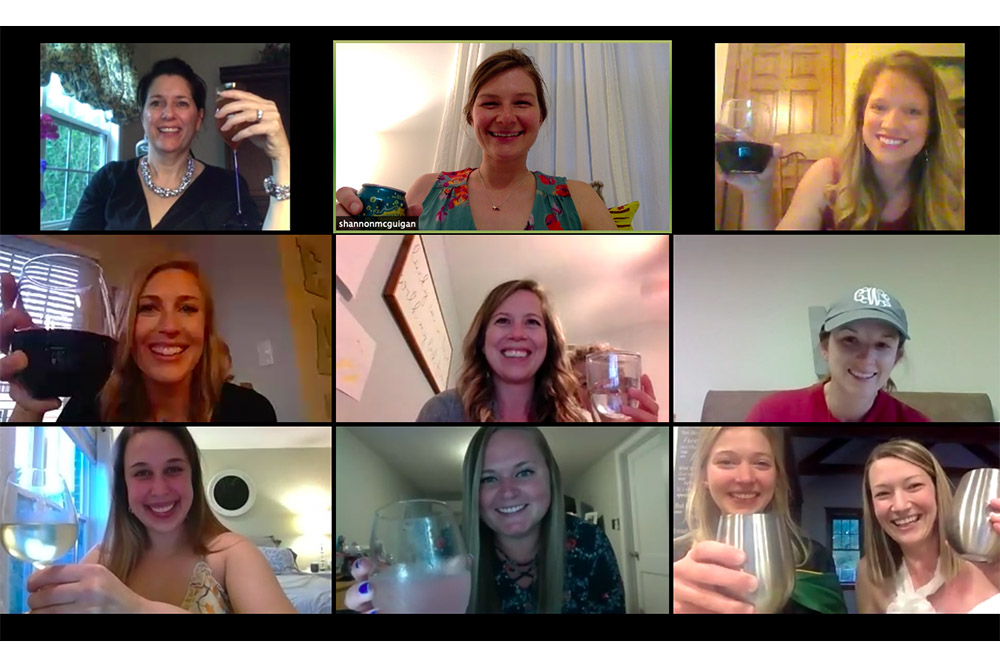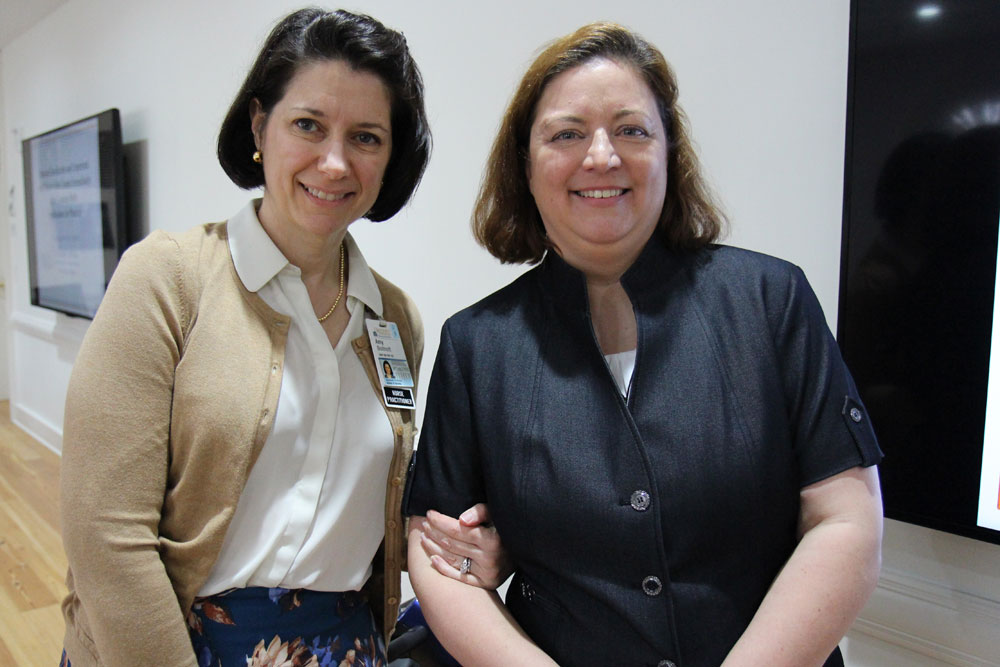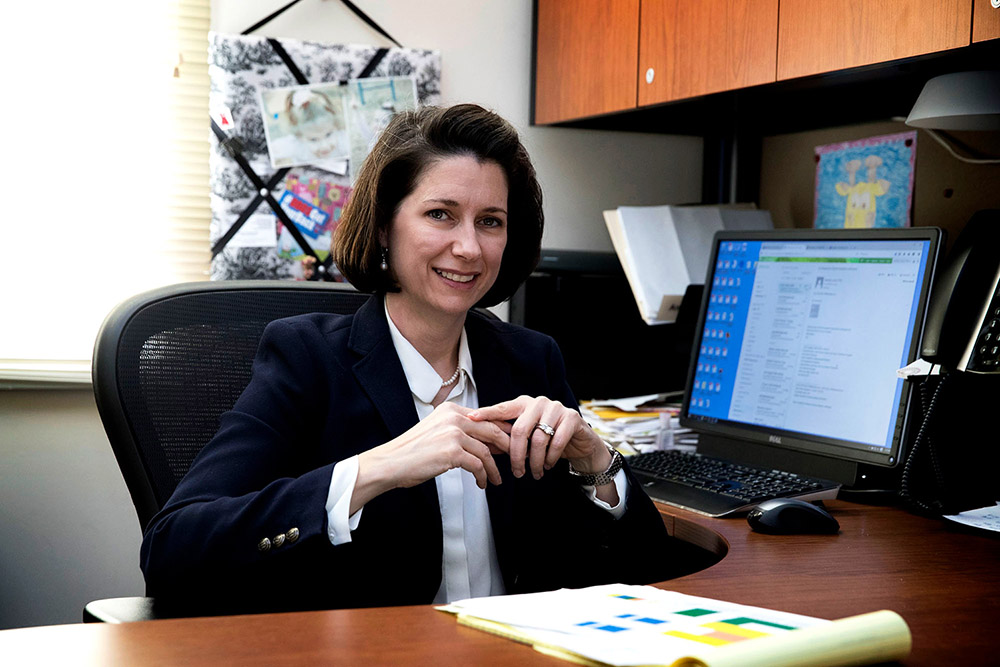Prof. Amy Boitnott on Grace, Mercy, and Zoom

Amy Boitnott, assistant professor and pediatric nurse practitioner program coordinator, was initially stumped by tech’s steep learning curve as she migrated her classes online last spring and this summer. But the award-winning educator quickly found the “grace and mercy” she solicited from students, nearly 100 percent of whom attended her live, synchronous classes, and even petitioned for additional learning at semester’s end (which she accommodated). With equal doses of humility and humor, here’s how Boitnott coped, celebrated, laughed, learned, connected—and grew.
On Taming the Tech
“[When classes went online,] I started the transition by sending students an email asking for their mercy and grace. I was learning this whole new thing, and was awkward, electronically … but it was the classes taught by [instructional designer] Kevin [Tressler], and help from my colleague [assistant professor] Tomeka [Dowling] that really helped at the start. Tomeka said to me, ‘Girl, we got this.’ And we did.”
On Synchronicity
“We were told to keep classes asynchronous … but I feed off the energy in the classroom—it’s how I teach, and there’s a lot of reciprocal learning. I said to students, ‘We won’t be on Grounds together, but we’ll be together.’ My classes will still be in the cloud. And people really showed up; and when they didn’t, they tripped over themselves to give me explanations for their absence.


“After class, I always stay online, like I do in my in-person classes, so students could still [albeit virtually] what I call 'rush the podium.' On Zoom, I have conversations after class for 5, 10, sometimes 20 minutes or longer. Sometimes it’s a group, sometimes it’s private, one-on-one. I’ve found it’s good to keep that space open.
“I’d like to continue to do the synchronous classes … especially for the hard stuff, like the classes about when a child dies; it’s important that we share those together. They elicit a lot of emotion, bring up personal thoughts and memories. People need to be able to talk when they’re thinking, ‘Oh, my gosh, can I ever do this as a nurse?’”
On Keeping Perspective
“I have three adolescent girls, including a daughter in college … I would watch her professor, see how badly she was struggling, how teachers were ramping up assignments, and how my daughter responded, and thought, ‘This is what the whole world is living now.’ I didn’t want to make things harder, so [in my courses] I took some things away. I always remind students that the most important grade is the one you get from your patient. I’ve also changed the structure of how I grade.
“I also knew I had to be the very best I could be. I said, ‘It’s going to be messy, but together we’re going to continue to learn.’”
On Little Things That Work
“We still do good and grateful Mondays, where students share something—a nursing experience, or something personal—to help us remember the good in the world. I also started doing assignment sheets with check-boxes: do this reading, take this quiz, watch this video, listen to my voiceover, check off what you’ve done. Students really like it. There’s a satisfaction and psychology to it. ‘I’ve achieved this; I’m checking it off.’
“After I assign readings, I ask students to write a test-type question and post it to the discussion board. They also answer a question another person wrote. I’ve been so impressed by their questions … [Rather than asking] What are three factors of ADHD? they’ll ask in their questions, How will you teach the family and child to understand their ADHD diagnosis? They’re thinking like nurses now. The black and white of facts [yields to], ‘Here’s our patient. How will we think through this process?’
“I also allow silence now, which is difficult for me. I can see students’ body language, and try to assess, ‘Are we silent because we’re confused, or uneasy?’ Eventually somebody will speak up.”
On Virtual Celebrations
“Historically, I take my NP students to the Garden Room on the Lawn, and we get a private dining room, which is a great way to celebrate their work. This year, my colleague Ginger Richardson and I made video recordings about our memories of students, with pictures of them we pulled from Facebook, and compiled it into a five to seven-minute video for each of the nine students. Everybody came together at 8 p.m. on Zoom Thursday night and we showed the videos. That’s a picture of our toast. Unfortunately, it was BYOB.”
On Teaching This Fall
“I absolutely want to come back on Grounds … but I also want to do what’s going to serve. I do get a little anxious about coming back sometimes … Can I still teach well, when I haven’t done it in person for so long?
“I do worry that some people will say, ‘We can do it all online, so why not?’ I’m trying to keep things connected but I don’t want to miss teaching and learning and caring in person. We really need to be together, to talk in a meaningful way. I know it’s a lot more than just a simple decision, though, and I’m grateful for the good people doing good work to see this through.
“The lesson I take from Zoom—the human lesson—is that even though these people might be back on Grounds, in dorms, they still have all this other stuff going on. I always knew that, but now I know it more. I feel more of a connection with that person in that seat. It’s given me a different perspective. Probably them, too. They see me as more of a human being.”
###
